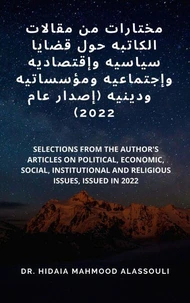Electric Power Transmission. Lecture Notes of Electric Power Transmission Course
Par :Formats :
Disponible dans votre compte client Decitre ou Furet du Nord dès validation de votre commande. Le format ePub est :
- Compatible avec une lecture sur My Vivlio (smartphone, tablette, ordinateur)
- Compatible avec une lecture sur liseuses Vivlio
- Pour les liseuses autres que Vivlio, vous devez utiliser le logiciel Adobe Digital Edition. Non compatible avec la lecture sur les liseuses Kindle, Remarkable et Sony
 , qui est-ce ?
, qui est-ce ?Notre partenaire de plateforme de lecture numérique où vous retrouverez l'ensemble de vos ebooks gratuitement
Pour en savoir plus sur nos ebooks, consultez notre aide en ligne ici
- Nombre de pages243
- FormatePub
- ISBN978-3-96917-030-4
- EAN9783969170304
- Date de parution19/06/2020
- Protection num.Digital Watermarking
- Taille88 Mo
- Infos supplémentairesepub
- ÉditeurVigilo Books
Résumé
This book includes my lecture notes for electrical power transmission course. The power transmission process, from generation to distribution is described and expressions for resistance, inductance and capacitance of high-voltage power transmission lines are developed used to determine the equivalent circuit of a three-phase transmission line. The book is divided to different learning outcomesPart 1- Describe the power transmission process, from generation to distribution.
Part 2- Develop expressions for resistance, inductance and capacitance of high-voltage power transmission lines and determine the equivalent circuit of a three-phase transmission line. Part 1: Describe the power transmission process, from generation to distribution. Describe the components of an electrical power system. Identify types of power lines, standard voltages, and components of high-voltage transmission lines (HVTL).
Describe the construction of a transmission line, galloping lines, corona effect, insulator pollution, and lightning strikes. Explain transmission system stability in regards to power transfer, power flow division, and transfer impedance. Part 2: Develop expressions for resistance, inductance and capacitance of high-voltage power transmission lines and determine the equivalent circuit of a three-phase transmission line.
List the types of conductors used in power transmission line. Develop the expression for the inductance and capacitance of a simple, single-phase, two wire transmission line composed of solid round conductors. Deduce the expression for the inductance and capacitance of a simple, single-phase composite (stranded) conductor line. Derive the expression for the inductance and capacitance of three-phase lines having symmetrically and asymmetrically spacing and for bundled conductors.
Discuss the effect of earth on the capacitance of three-phase transmission lines. Derive the short transmission lines models and medium transmission lines models.
Part 2- Develop expressions for resistance, inductance and capacitance of high-voltage power transmission lines and determine the equivalent circuit of a three-phase transmission line. Part 1: Describe the power transmission process, from generation to distribution. Describe the components of an electrical power system. Identify types of power lines, standard voltages, and components of high-voltage transmission lines (HVTL).
Describe the construction of a transmission line, galloping lines, corona effect, insulator pollution, and lightning strikes. Explain transmission system stability in regards to power transfer, power flow division, and transfer impedance. Part 2: Develop expressions for resistance, inductance and capacitance of high-voltage power transmission lines and determine the equivalent circuit of a three-phase transmission line.
List the types of conductors used in power transmission line. Develop the expression for the inductance and capacitance of a simple, single-phase, two wire transmission line composed of solid round conductors. Deduce the expression for the inductance and capacitance of a simple, single-phase composite (stranded) conductor line. Derive the expression for the inductance and capacitance of three-phase lines having symmetrically and asymmetrically spacing and for bundled conductors.
Discuss the effect of earth on the capacitance of three-phase transmission lines. Derive the short transmission lines models and medium transmission lines models.
This book includes my lecture notes for electrical power transmission course. The power transmission process, from generation to distribution is described and expressions for resistance, inductance and capacitance of high-voltage power transmission lines are developed used to determine the equivalent circuit of a three-phase transmission line. The book is divided to different learning outcomesPart 1- Describe the power transmission process, from generation to distribution.
Part 2- Develop expressions for resistance, inductance and capacitance of high-voltage power transmission lines and determine the equivalent circuit of a three-phase transmission line. Part 1: Describe the power transmission process, from generation to distribution. Describe the components of an electrical power system. Identify types of power lines, standard voltages, and components of high-voltage transmission lines (HVTL).
Describe the construction of a transmission line, galloping lines, corona effect, insulator pollution, and lightning strikes. Explain transmission system stability in regards to power transfer, power flow division, and transfer impedance. Part 2: Develop expressions for resistance, inductance and capacitance of high-voltage power transmission lines and determine the equivalent circuit of a three-phase transmission line.
List the types of conductors used in power transmission line. Develop the expression for the inductance and capacitance of a simple, single-phase, two wire transmission line composed of solid round conductors. Deduce the expression for the inductance and capacitance of a simple, single-phase composite (stranded) conductor line. Derive the expression for the inductance and capacitance of three-phase lines having symmetrically and asymmetrically spacing and for bundled conductors.
Discuss the effect of earth on the capacitance of three-phase transmission lines. Derive the short transmission lines models and medium transmission lines models.
Part 2- Develop expressions for resistance, inductance and capacitance of high-voltage power transmission lines and determine the equivalent circuit of a three-phase transmission line. Part 1: Describe the power transmission process, from generation to distribution. Describe the components of an electrical power system. Identify types of power lines, standard voltages, and components of high-voltage transmission lines (HVTL).
Describe the construction of a transmission line, galloping lines, corona effect, insulator pollution, and lightning strikes. Explain transmission system stability in regards to power transfer, power flow division, and transfer impedance. Part 2: Develop expressions for resistance, inductance and capacitance of high-voltage power transmission lines and determine the equivalent circuit of a three-phase transmission line.
List the types of conductors used in power transmission line. Develop the expression for the inductance and capacitance of a simple, single-phase, two wire transmission line composed of solid round conductors. Deduce the expression for the inductance and capacitance of a simple, single-phase composite (stranded) conductor line. Derive the expression for the inductance and capacitance of three-phase lines having symmetrically and asymmetrically spacing and for bundled conductors.
Discuss the effect of earth on the capacitance of three-phase transmission lines. Derive the short transmission lines models and medium transmission lines models.







